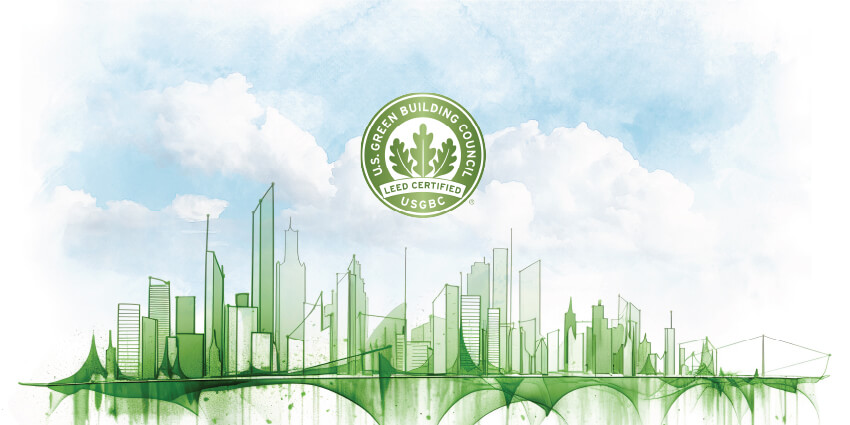How to Specify HVAC Equipment to Attain LEED Certification

Leadership in Energy and Environmental Design (LEED) is nearly 30 years old. The voluntary rating and certification program has had a profound impact on the direction of building design and construction. More than 93,000 projects and more than 19 billion square feet of space have qualified (registered or certified) for LEED. However, like many programs, LEED continues to evolve.
LEED has become much more than the design and construction of the building. Newer initiatives address products and components that affect the entire process from concept to completion. These initiatives also focus on products affecting occupants using the building space, such as HVAC. LEED categories and subcategories that relate to HVAC equipment include:
- Energy Performance
- Refrigerant Management
- Commissioning
- Enhanced Indoor Air Quality Strategies
- Thermal Comfort
- Acoustic Performance
Energy Performance
Laboratory testing is the accepted method to determine the performance of HVAC products. Unfortunately, not all HVAC manufacturers provide adequate information as part of the product documentation. Yet, products specified for LEED projects should include documentation detailing performance, refrigerant management, and environmental impacts.
Refrigerant Management
HVAC equipment using more than 0.5 lbs. of refrigerant falls under this LEED subcategory. This subcategory details the types of refrigerants to use or avoid based on the equipment specified to comply with ASHRAE 15-2019. Managing refrigerants also includes planning to address potential issues such as system leakage, retrofits, and disposal.
Commissioning
HVAC systems going online must have performance criteria available along with set points included in the Basis of Design to meet LEED requirements. This means controls and sensors should provide performance feedback to the end user, and the data must go to the building automation system.
Enhanced Indoor Air Quality Performance
LEED certification credits for indoor air quality (IAQ) use ASHRAE 62.1 as it relates to buildings with mechanical ventilation. These spaces must maintain an outdoor airflow greater than 1000 cfm that must have constant monitoring to ensure the airflow does not vary by 15% or more. Sensors and controls connecting the HVAC equipment with the building automation and filtration media requirements in accordance with ASHRAE 52.2 play a significant role.
Thermal Comfort
Acoustic Performance
Specifying HVAC Products to Achieve LEED Certification
Interest continues to increase in how mechanical systems, such as HVAC systems, can help achieve LEED certification. Therefore, specifying engineers need to know what to look for when selecting HVAC equipment.
- Make sure the equipment you specify has the applicable performance data based on documented testing done in approved laboratory testing facilities. This data should include documentation on performance, refrigeration management, and environmental impacts.
- The next step is ensuring the performance data has been certified by third-party organizations affiliated with the HVAC industry. The most common include the Air Movement and Control Association, International (AMCA), Air-Conditioning, Heating, and Refrigeration Institute (AHRI), American Society of Heating, Refrigerating, and Air-Conditioning Engineers (ASHRAE), and Underwriters Laboratory (UL).
- Look for configurable HVAC products instead of a one-size-fits-all option. Configurable products allow for scaling to the size of the application, thereby minimizing energy costs.
- Ensure the HVAC products have the capability of connecting to building automation systems to maximize the use of sensors and controls, providing the building owner with ongoing feedback and the automatic ability to adjust performance as needed.



from